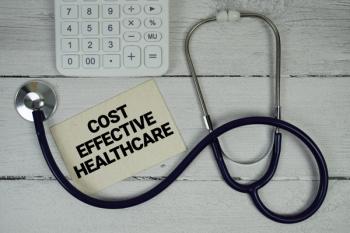
Two Opdivo Updates from Bristol Myers Squibb
First approved by the U.S. Food and Drug Administration (FDA) in 2014, Opdivo has multiple indications across various types of cancer, including NSCLC, melanoma, renal cell carcinoma, Hodgkin lymphoma, squamous cell carcinoma of the head and neck, and urothelial carcinoma.
The CheckMate -73L phase 3 trial missed its primary endpoint of progression-free survival (PFS) in unresectable stage 3 non-small cell lung cancer (NSCLC), according to a May 10th statement from
In this trial, a total of 925 patients were randomly assigned to receive Opdivo (nivolumab) in combination with concurrent chemoradiotherapy (CCRT) followed by either Opdivo plus Yervoy (ipilimumab), Opdivo monotherapy, or CCRT followed by Imfinzi (durvalumab).
“Unfortunately, adding immunotherapy concurrently with definitive chemoradiation did not improve PFS outcomes in this setting,”
Opdivo is a programmed death-1 (PD-1) immune checkpoint inhibitor, a type of immunotherapy that helps immune cells attack cancer. First approved by the U.S. Food and Drug Administration (FDA) in 2014, Opdivo has multiple indications across various types of cancer, including NSCLC, melanoma, renal cell carcinoma, Hodgkin lymphoma, squamous cell carcinoma of the head and neck, and urothelial carcinoma.
Currently, Opdivo is given as an intravenous (IV) infusion. The infusion takes 30 to 60 minutes and is given every 2 or 4 weeks. It is typically given at a hospital or infusion center. However, a potentially time-saving option may become available in the near future.
On May 6th, the FDA accepted the Biologics License Application (BLA) for a subcutaneous formulation of Opdivo. The BLA was based on the
The BLA includes all of Opdivo’s previously approved indications for solid tumors in adults as monotherapy, monotherapy following completion of Opdivo + Yervoy, or in combination with chemotherapy or cabozantinib (Cabometyx, Cometriq).
A subcutaneous (an injection given under the skin) form of Opdivo “would provide patients and their physicians with a new option that delivers the same well-known benefits as IV Opdivo but with the improved convenience of an injection administered in three-to-five minutes rather than a 30-to-60-minute infusion,”
In an
“We hope that this translates to less time away from work or a reduction in childcare or eldercare costs due to less time away from home,” Fusaro said. “Ultimately, it may mean more time for the activities that they enjoy with the people they love.”
If approved by the FDA, Opdivo would become the first PD-1 inhibitor with a subcutaneous option. The formula includes nivolumab plus hyaluronidase, an enzyme that improves the absorption of medications injected under the skin.
The FDA has assigned a target action date of February 28, 2025.
Newsletter
Get the latest industry news, event updates, and more from Managed healthcare Executive.





















































